Photograph 51 at London’s Noël Coward Theatre
Photograph 51 recently had a two-month run at London’s Noël Coward Theatre, with much buzz surrounding it. This was not surprising, as Hollywood A-lister Nicole Kidman played the lead role. She starred as Rosalind Franklin, a British scientist who was invaluable in the discovery of the structure of DNA, but who never received credit for her work. The new play, written by Anna Ziegler and directed by Michael Grandage, was a sell-out, with queues for day-of tickets encircling the theatre each morning.
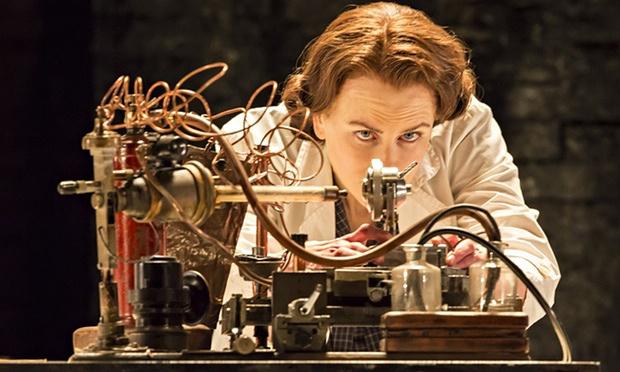
The play covers the potential reasons behind Franklin’s lack of recognition. It delves into issues of sexism—for example, how she was not allowed into the male-only senior common room at King’s College London despite her position—as well as looking at her personality. She is described as prickly, and is shown to frequently rebuff both romantic and friendly overtures from the male characters. The play takes us through her life and research, showing us the stages in the journey that ultimately brought her male colleagues—Francis Crick, James Watson, and Maurice Wilkins—a Nobel Prize.
It also looks at her work, and how she refused to speculate on the nature of DNA until she had proven it herself through x-ray crystallography. One discovery, the fifty-first photograph she took at Kings, was later seen by one of her research rivals. With this (underhanded) knowledge, they solved the structure of DNA.
Franklin did not have time to put the pieces together. She died at age thirty-seven from ovarian cancer—a bitter irony, according to the play, since she eschewed physical relationships in order to concentrate on her science. The Nobel Prize is not awarded posthumously, and thus she missed out.
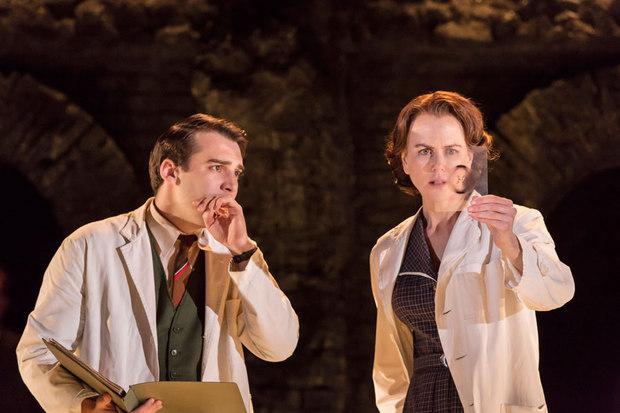
Perhaps the play does not come to a real or definite answer, but it does make us ask the question as to why Franklin is more or less overlooked in our textbooks. The play explores sexism in science, but also touches on the danger of overlooking personal relationships, and the risk of others taking credit for ones own work.
A cast of six relays these themes to us. Kidman is joined by Will Attenborough, Edward Bennett, Patrick Kennedy, Stephen Campbell Moore, and Joshua Silver. Kidman, both by virtue of her talent and her role, shines brightest.

I found the pacing difficult due to lots of exposition. We are told (rather than shown) that Franklin is known for being prickly, for example. Narration is shared between the male characters, all of them looking back on the past and describing events as they saw them. By design the narration leaves a lot in mystery, as the characters speculate on things they could not have known.
The set features the burned and rubble-strewn arches of King’s College. It is accurate to the period, but to me portrayed more of a war epic than a scientist’s lab.
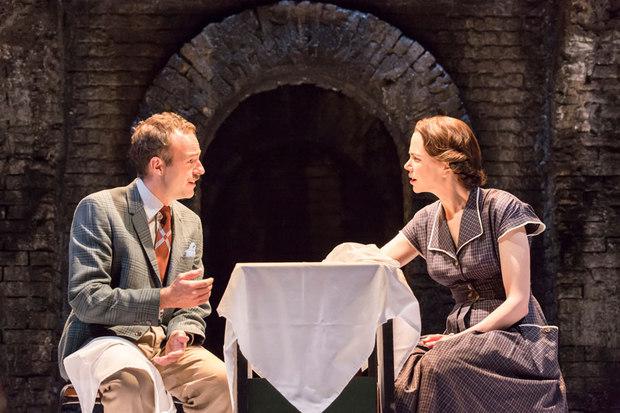
Kidman is at first very restrained and crisp, hardly gesturing and only reacting with coldness or anger, if she shows any emotion at all. This seems to simply reinforce her reputation as being a little wooden, but there is more to come. Franklin begins to warm up towards the end of the play, beginning a potential romance with Kennedy’s Donald Caspar. During a dinner date, the reluctant Franklin finally shows her inner femininity, with an internal speech of all of the things she wants to say to him. Then she discovers her cancer. This is where Kidman comes to life: heart breaking before our eyes, she accepts defeat, knowing that her death is imminent. In the final moments of the play, tears run unchecked down Kidman’s cheeks. She even gives a wry smile of apology to the audience as she wipes them away before taking a bow.
In the end, it is this human touch that makes the play.
With the play itself now put to one side, it’s important to examine the large distraction caused by Kidman. This is Nicole Kidman, after all—Hollywood movie star and tabloid favorite. She is well fitted to the character of Franklin.
I found her presence to be the most distracting thing in the room. At times it was difficult to focus on the other actors, even as she paused for them to speak.
It has to be wondered how much I missed while I was engrossed in this mythical creature, finding her to be as real as anyone in the audience. How much did everyone else miss, watching her instead of the others because of her great fame?
It has to be wondered how much I missed while I was engrossed in this mythical creature, finding her to be as real as anyone in the audience. How much did everyone else miss, watching her instead of the others because of her great fame? Did the rest of the cast, too, get a little off-kilter because of her presence? Is it incredibly more nerve-wracking to share the stage with a star than to dominate it yourself?
I suppose the question at the heart of this is whether it is a good thing for theatre when film celebrities return to the stage. Undoubtedly it gets more tickets sold, but it is also possible that it compromises the quality of the production. I’ve seen Eddie Redmayne, Benedict Cumberbatch, and Mark Rylance on stage, and none of them were quite as distracting as Kidman—but then, none of them are quite as famous.
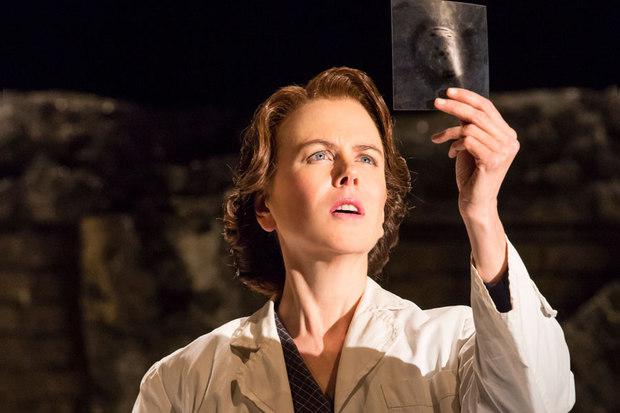
While it is always wonderful to see idols of the screen on stage, we must not forget or allow to be forgotten that the main goal of theatre is to tell a story. When a play can sell out, in part, because of a celebrity thespian— while down the road, another play with just as much merit but no big name closes due to lack of attendance—theatre might just be in trouble.


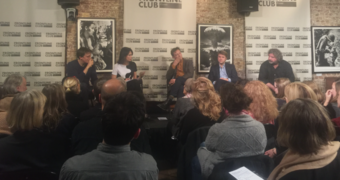



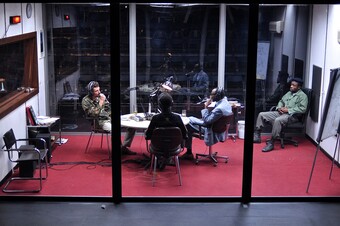

Comments
The article is just the start of the conversation—we want to know what you think about this subject, too! HowlRound is a space for knowledge-sharing, and we welcome spirited, thoughtful, and on-topic dialogue. Find our full comments policy here
Casting celebrities is one channel to connect with an audience, but the little known backstory of Photograph 51 highlights another way to reach an audience; one that is, as Ms D'Averc suggests, more intellectually and artistically pure. The script was originally commissioned by Active Cultures Theatre, a sleeping if not bygone producing company in Mt Rainier, MD. Active Cultures had, as far as I know, a unique producing model. They held several open meetings for audience members each year and collected ideas for topics of plays then chose from among the suggestions to either commission or devise work to the topic. Workers at several government laboratories live in Mt Rainier. One of them brought the Rosalind Franklin story into the room. It carried the day, enabled a well attended premiere production and led eventually to this giant West End run. Looking at the seat count and average ticket price at the Coward, one night's takings would exceed the annual budget of Active Cultures in the year it invented Photograph 51. So making a deep connection with your audience and responding artistically to their interests makes purer art, but celebrities make bank. Frustrating.